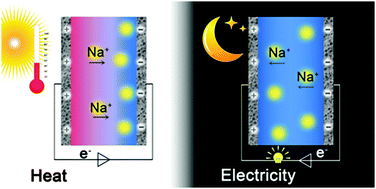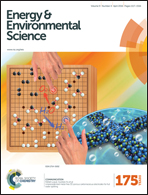Ionic thermoelectric supercapacitors†
Abstract
Temperature gradients are generated by the sun and a vast array of technologies and can induce molecular concentration gradients in solutions via thermodiffusion (Soret effect). For ions, this leads to a thermovoltage that is determined by the thermal gradient ΔT across the electrolyte, together with the ionic Seebeck coefficient αi. So far, redox-free electrolytes have been poorly explored in thermoelectric applications due to a lack of strategies to harvest the energy from the Soret effect. Here, we report the conversion of heat into stored charge via a remarkably strong ionic Soret effect in a polymeric electrolyte (Seebeck coefficients as high as αi = 10 mV K−1). The ionic thermoelectric supercapacitor (ITESC) is charged under a temperature gradient. After the temperature gradient is removed, the stored electrical energy can be delivered to an external circuit. This new means to harvest energy is particularly suitable for intermittent heat sources like the sun. We show that the stored electrical energy of the ITESC is proportional to (ΔTαi)2. The resulting ITESC can convert and store several thousand times more energy compared with a traditional thermoelectric generator connected in series with a supercapacitor.



 Please wait while we load your content...
Please wait while we load your content...